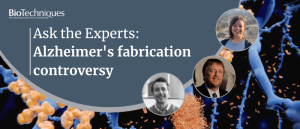Can a molecule in green tea treat dementia?

A new study has demonstrated that a molecule commonly found in green tea breaks down tau tangles in Alzheimer’s brain tissue, revealing other molecules that may be effective in halting dementia.
Biochemists from the University of California Los Angeles (UCLA; CA, USA) have been inspired by the ability of the green tea molecule called EGCG to dissolve the filamentous, layered protein tangles that kill neurons in Alzheimer’s disease. Although EGCG’s poor drug-like properties and inability to pass the blood–brain barrier has stopped green tea from becoming a mainstream dementia treatment, the tea molecules have helped scientists identify a molecule with more promise.
Alzheimer’s disease is characterized by the loss of neurons in the brain, for which amyloid tangles (layers of tau protein fibers) are responsible. Amyloid tangles are clumps of protein that aggregate around neurons, restricting their function. Therefore, it was hypothesized that breaking down these aggregates could be a viable method for halting dementia progression.
Researchers have known for a while that EGCG can break down these amyloid tangles in Alzheimer’s brain tissue samples. The next step was to figure out how EGCG was able to do it and find a drug that mimicked its mechanism of action.
 Ask the Experts: Alzheimer’s fabrication controversy
Ask the Experts: Alzheimer’s fabrication controversy
In this Ask the Experts, three Alzheimer’s specialists answer questions about the potentially fabricated data presented in an important 2006 paper.
The current study extracted tau protein aggregates from brain tissue with Alzheimer’s disease and incubated them with EGCG for varying amounts of time. Within 24 hours, all tau protein aggregates had disappeared.
The researchers cryogenically trapped the fibrils halfway along the kinetic pathway to disaggregation by EGCG. They then determined the cryo-EM structure of the trapped tangles to investigate how EGCG was interacting with them. They found that EGCG molecules stack and bind between the tau protein filaments. “The EGCG molecules bind to each layer of the fibers, but the molecules want to be closer together. As they move together the fiber snaps,” reported David Eisenberg, senior author of the study.
They used this information to computationally screen drug-like compounds for binding characteristics similar to those of EGCG. They identified several compounds, which were then tested in the lab, that proved to be successful at breaking down amyloid tangles in vitro. Among these compounds were CNS-11 and CNS-17, which in addition to successfully breaking down amyloid tangles also stopped the spreading of tau protein aggregates across multiple cells.
This study demonstrates how computational methods can be used to assist structure-based drug discovery. In future, the researchers hope that drugs will be developed utilizing CNS-11 and CNS-17 to combat Alzheimer’s disease. These findings provide insight into possible new treatments for dementia as well as other neurodegenerative diseases in which tau protein aggregation is implicated.